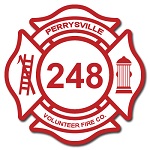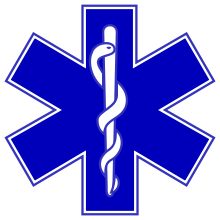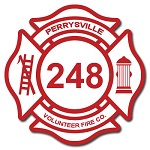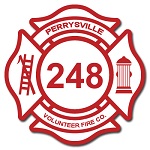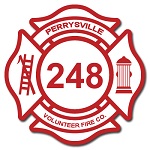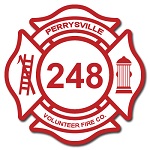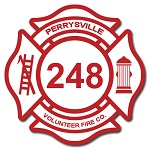Information
-
The National Fire Protection Association (NFPA) requires individual members to conduct a routine inspection of their personal protective equipment (PPE) upon issuance and after each use to help reduce the health and safety risks associated with improper maintenance, contamination, or damage. Individual members may use this checklist for performing and documenting routine inspections of PPE. The items listed reflect the minimum requirements for the Routine Inspection of PPE as outlined in Chapter 6, Section 2 of NFPA 1851: Standard on Selection, Care, and Maintenance of Protective Ensembles for Structural Fire Fighting and Proximity Fire Fighting (2014).
-
Equipment Assigned to:
- Allaway
- Bennett
- Bright
- Caye
- Cherup
- Ferezan
- Halas
- Hunt
- Kaminski
- Klein
- Koleck
- Kuhn
- Lubarksy
- McKernan
- Sawl
- Smith
- Snyder
- Voss
- Weingartner
- Williams
- Wissner
- Yester
-
Inspected by:
-
Conducted on:
Protective Equipment Inspection
Coat and Pants
-
Soiling
-
Contamination
-
Physical damage such as:
-
a: Rips, tears, and cuts
-
b: Damaged or missing hardware and closure systems
-
Thermal damage (Charring, burn holes, melting, discoloration of any layer
-
Damaged or missing reflective trim
-
Loss of seam integrity and broken or missing stitches
-
Correct assembly and size compatibility of shell, liner, and the drag rescue device (DRD)
-
Comments:
Drag Rescue Device
-
Installation in garment
-
Soiling
-
Contamination
-
Physical damage such as:
-
a. Cuts, tears, punctures, cracking, or splitting
-
b. Thermal damage (charring, burn holes, melting, discoloration)
-
c. Loss of seam integrity and broken or missing stitches
-
Comments:
Hood
-
Soiling
-
Contamination
-
Physical damage such as:
-
a: Rips, tears, and cuts
-
b: Damaged or missing hardware and closure systems
-
Loss of face opening adjustment
-
Loss of seam integrity and broken or missing stitches
-
Comments:
Helmet
-
Soiling
-
Contamination
-
Physical damage such as:
-
a. Cracks, crazing, dents, and abrasions
-
b. Thermal damage to the shell (bubbling, soft spots, warping, discoloration)
-
Physical damage to the earflaps such as:
-
a. Rips, tears, and cuts
-
b. Thermal damage (charring, burn holes, melting)
-
Damaged or missing components of the suspension and retention systems
-
Damaged or missing components of the faceshield/goggle system, including discoloration,<br>crazing, and scratches to the faceshield/goggle lens limiting visibility
-
Damaged or missing reflective trim
-
Loss of seam integrity and broken or missing stitches
-
Comments:
Structure Gloves
-
Soiling
-
Contamination
-
Physical damage such as:
-
a: Rips, tears, and cuts
-
b. Thermal damage (charring, burn holes, melting, discoloration of any layer)
-
c. Inverted liner
-
Shrinkage
-
Loss of elasticity or felxibility
-
Loss of seam integrity and broken or missing stitches
-
Comments:
Rescue Gloves
-
Soiling
-
Contamination
-
Physical damage such as:
-
a: Rips, tears, and cuts
-
Loss of seam integrity and broken or missing stitches
-
Comments:
Footwear
-
Soiling
-
Contamination
-
Physical damage such as:
-
a. Cuts, tears, or punctures
-
b. Thermal damage (charring, burn holes, melting, discoloration of any layer)
-
c. Exposed or deformed protective toe, protective midsole, or shank
-
Loss of water resistance
-
Closure system component damage and functionality if applicable
-
Loss of seam integrity and broken or missing stitches
-
Comments:
Escape Rope
-
Show Rope Inspection if Structure Qualified
-
No discoloration, friction markings
-
Is Escape Rope acceptable for use?
Escape Belt
-
Show Escape Belt Inspection if Structure Qualified
-
Free of frayed, cut or worn material?
-
Descender Hardware Inclcuded?
-
Carabiner Hardware Qty - 2 Included?
-
Is Escape Belt and Harware acceptable for use?
Eye Protection
-
Safety Glasses or Googles provided?
Additional information
-
Which Equipment failed inspection?
- COAT
- PANTS
- GLOVES
- HELMET
- BOOTS
- HOOD
- ESCAPE BELT
- ESCAPE ROPE
- EYE PROTECTION
-
Was Equipment replaced?
-
Equipment replaced
- COAT
- PANTS
- GLOVES
- HELMET
- BOOTS
- HOOD
- ESCAPE BELT
- ESCAPE ROPE
- EYE PROTECTION
-
Reason for failure
-
Select date
-
Add signature
